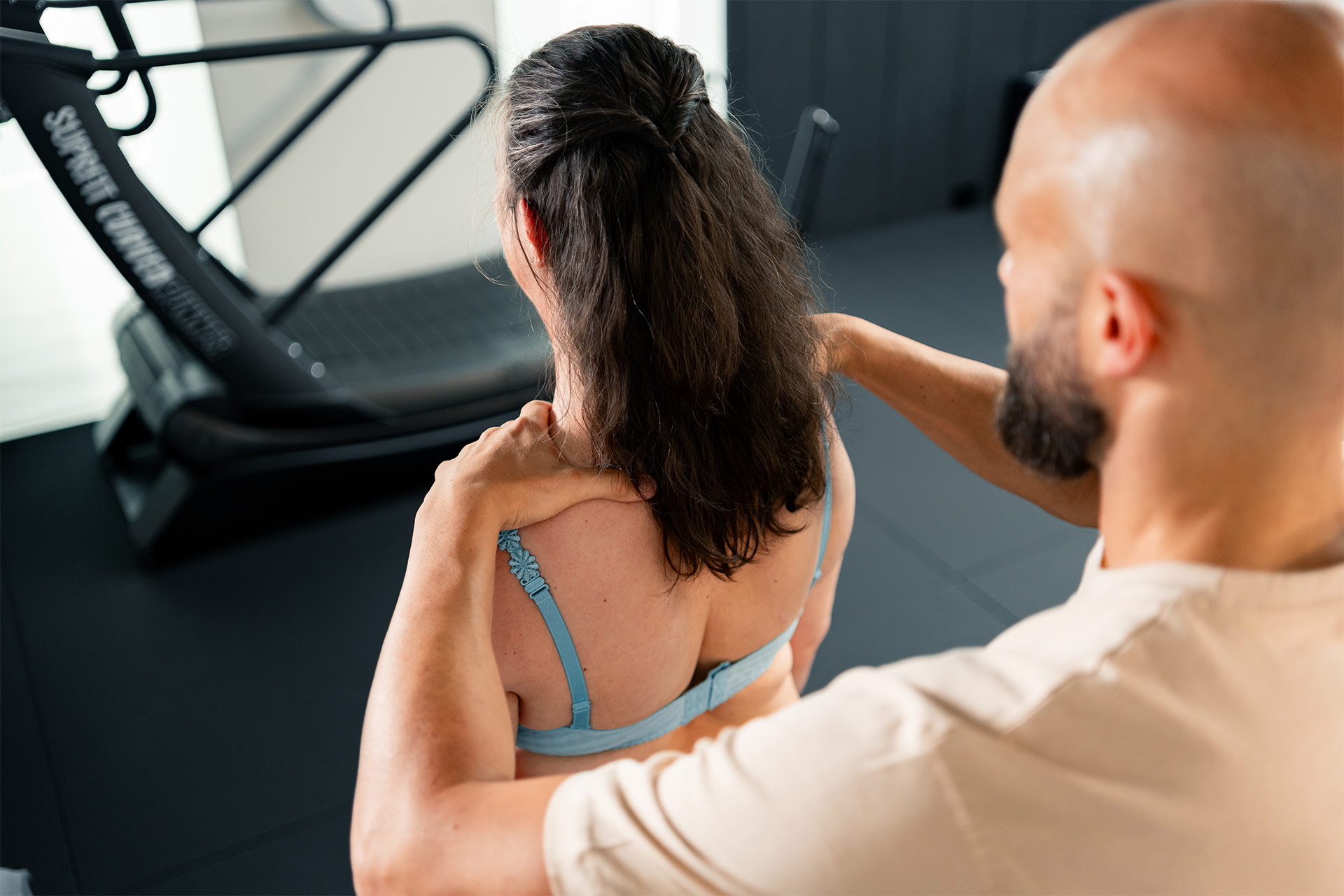Back pain is one of the most common health complaints worldwide. It can significantly affect your daily life and reduce your quality of life. But what causes this pain? Often, there are several factors that interact to put a strain on your back. In this blog post, I'll show you the most common causes of back pain and offer you effective recommendations for how you can get through your daily life pain-free again.
Common causes of back pain
1. Stress: the invisible trigger
Stress is a constant companion for many people today and has numerous effects on the body – one of the most common being tension in the back muscles. When we are under stress, our muscles often unconsciously tense up, especially in the neck, shoulders and lower back. This constant tension leads to poor posture, which can intensify back pain. In addition, stress contributes to the intensification of pain sensations because it puts the body on alert.
2. Lack of movement: the silent cause of pain
In today's world, we spend a lot of time sitting – whether it's at the office, driving or relaxing at home. This lack of movement can weaken the back muscles, leading to poor posture and chronic pain. The lack of movement not only affects the muscles, but also the joints and blood circulation, making the body less resilient overall.
3. Muscular imbalances: when the body is out of balance
Muscular imbalances occur when certain muscle groups in the body are overstrained or too weak. This can lead to poor posture and imbalances in the musculoskeletal system, resulting in back pain. Imbalances often arise from one-sided strain, for example when sitting, lifting or doing the wrong sports exercises. These imbalances put a strain on the back and can lead to chronic pain in the long term.
4. Digestive problems:
An underrated cause of back pain that is less well known is the link between digestive problems and back pain. Poor digestion can lead to bloating, gas and even poor posture, as the abdominal area bulges and the posture automatically changes. In addition, impaired digestive function can promote inflammation in the body, which puts additional strain on the back.

Recommended measures to relieve back pain
1. More movement: prevent and relieve back pain
The first step to relieving back pain is to get more exercise. Targeted exercises can help you to strengthen your back muscles, increase your flexibility and balance out muscular imbalances. Activities such as swimming, cycling and yoga are particularly recommended. These sports take the strain off your back and promote healthy posture. Even small changes in your daily routine, such as regular breaks, going for walks or ensuring you have an ergonomic workstation, can work wonders.
2. Visceral osteopathy: the holistic approach
Visceral osteopathy is a special form of treatment that focuses on the internal organs. A disturbed function of the organs can affect the back via the fasciae and muscles in the body. For example, after pregnancies or accidents, organs may no longer be in the correct position and cause pain. Using gentle, targeted techniques, visceral osteopathy can release these blockages and restore balance to the body. This form of therapy can provide noticeable relief, especially for back pain that is related to digestive problems or internal blockages.
3. Take your time when eating: this will help your digestion.
When we eat, our bodies need time to process the food. Guzzling your food will only lead to indigestion and, in the long term, bloating and abdominal cramps – and these can affect your back. To promote healthy digestion, consciously take time to eat your meals, chew thoroughly and pay attention to your body's signals. Also, make sure you eat a balanced diet with enough fibre to aid digestion.
4. Correct posture: prevention and pain relief
Good posture is crucial to avoid or alleviate back pain. Make sure that you tilt your pelvis forward so that you sit with a slight hollow back and you can feel your ischial tuberosities well on the seat. Now let your breathing rise and fall from your abdomen across your front. Supported by this inner stability, you can let your shoulders/arms hang and your head is also free.
If you work at a desk for a long time, you should change your sitting position from time to time. Variety keeps you limber and helps to avoid one-sided strain. You can also stand if you have a high table. Light stretching exercises and going for a walk are also beneficial.
5. Rolfing: a deep-tissue connective tissue treatment
Rolfing, also known as ‘structural integration’, is a form of manual therapy that focuses on straightening the body and improving posture. A Rolfer works with the fasciae, the connective tissue of the body, and helps to release tension and blockages. Rolfing harmonises the structure of the body, which not only alleviates back pain but also promotes general well-being.

Conclusion: Treat back pain with complementary methods
Back pain is often the result of a complex interplay of various factors such as stress, lack of movement, muscular imbalances and digestive problems. A holistic approach that includes movement, healthy digestion, targeted osteopathy and proper posture is the key to a pain-free back. If back pain becomes chronic, it can be helpful to see an experienced therapist such as a Rolfer, who uses special techniques to rebalance the fasciae and muscles of the body.
Take time for your back, listen to your body's signals and take active steps to address the causes. Your back will thank you for it!
